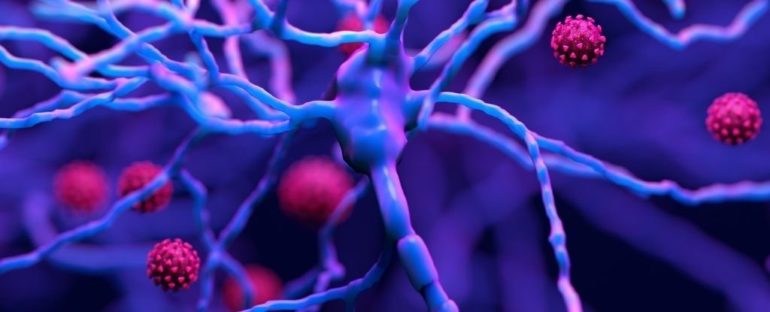The SARS-CoV-2 virus doesn’t just cause enduring damage to the lungs and the heart. A large number of patients who contract COVID-19 also report long-lasting neurological issues, including brain fog, memory loss, difficulty concentrating, hallucinations, headaches, and loss of smell or taste.
More than a year into the pandemic, scientists are still trying to figure out why. While some initial autopsies have found small signs of the virus within our brains, other autopsies have turned up nothing of significance.
Even if the SARS-CoV-2 virus doesn’t directly infiltrate our noggins, or does so rarely, some scientists think its presence in the body can still trigger serious changes upstairs.
The most comprehensive molecular investigation to date has now uncovered extensive inflammation and degeneration in the brains of those who have died from COVID-19 – even when they didn’t report any neurological symptoms in life.
The signs are eerily similar to what we see in Alzheimer’s and Parkinson’s disease, and yet no matter how hard the authors looked, they couldn’t find any trace of the actual virus in the brain tissue.
It’s possible the viral matter had already been cleared when these patients died, or it could be that SARS-CoV-2 is fanning the neurological flames from elsewhere in the body.
“The brains of patients who died from severe COVID-19 showed profound molecular markers of inflammation, even though those patients didn’t have any reported clinical signs of neurological impairment,” says neurologist Tony Wyss-Coray from Stanford University.
The study is small, but it suggests neurological damage may be common in severe cases of COVID-19, even when patients do not show any cognitive symptoms.
The study compared the brain tissue of 8 people who had died from COVID-19 with the brain tissue of 14 people who had died from other causes, including influenza.
Using single-cell RNA sequencing, the authors analyzed more than 65,000 frontal cortex and barrier cells, and their respective genes in each layer of the cortex. In every single type of brain cell examined, the team found certain genes were uniquely activated in COVID-19 patients, and many of these genes are involved in neuroinflammation.
“Together,” the authors conclude, “these data reveal significant brain barrier inflammation in COVID-19.”
The blood-brain barrier is a semipermeable border that separates select materials in the bloodstream from fluids that come into contact with brain tissues. This protects the brain from infection while still allowing certain nutrients and immune cells in.
But while the blood-brain barrier might be keeping the actual SARS-CoV-2 virus out, the inflammatory effects of COVID-19 could still be slipping through.
Certain immune cells, called T-cells, for instance, were far more abundant in the brains of those who had died from COVID-19. In fact, T-cell infiltration in the brain was apparent in all but one COVID-19 patient, while those in the control group showed none of these immune cells in their brain tissue.
An abundance of T-cells passing through the blood-brain barrier can promote neuroinflammation and impair tissue repair in mice, which means something similar could be happening in humans.
In the frontal cortex, which is responsible for decision-making, memory, and mathematical reasoning, those who died from COVID-19 showed serious signs of neuronal distress.
The outermost layer in this part of the brain displayed different molecular changes compared to the control group, including heightened neuronal suppression and limited neuronal activation.
This is similar to what is seen in Alzheimer’s disease, and it could be part of what’s causing the neurological symptoms associated with COVID-19.
“Viral infection appears to trigger inflammatory responses throughout the body that may cause inflammatory signaling across the blood-brain barrier, which in turn could trip off neuroinflammation in the brain,” explains Wyss-Coray.
“It’s likely that many COVID-19 patients, especially those reporting or exhibiting neurological problems or those who are hospitalized, have these neuroinflammatory markers we saw in the people we looked at who had died from the disease.”
Whether or not those who actually report neurological symptoms in life show greater neuroinflammation upon death is still unclear. But the findings suggest even if SARS-CoV-2 doesn’t slip past the blood-brain barrier and even if no neurological symptoms are reported, the virus can still have a lasting effect on cognitive function.
When the authors compared the genes that were expressed differently in the brains of COVID-19 patients to other neurological disease and central nervous system disorders, they found several overlaps with Alzheimer’s disease, multiple sclerosis, Huntington’s disease, Parkinson’s disease, autism spectrum disorder, depression, and schizophrenia.
Other recent autopsy studies have also shown surprisingly widespread brain damage, usually associated with strokes and neuroinflammatory diseases in those who have died of COVID-19.
Given how widespread this virus has become, it is crucial we figure out how it might impact our neurological health in the long run.
The study was published in Nature.



